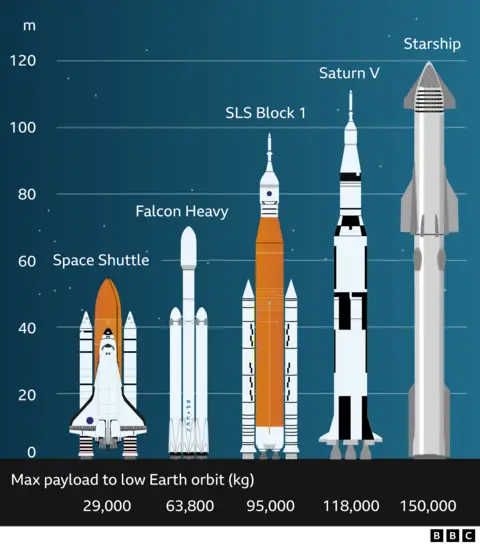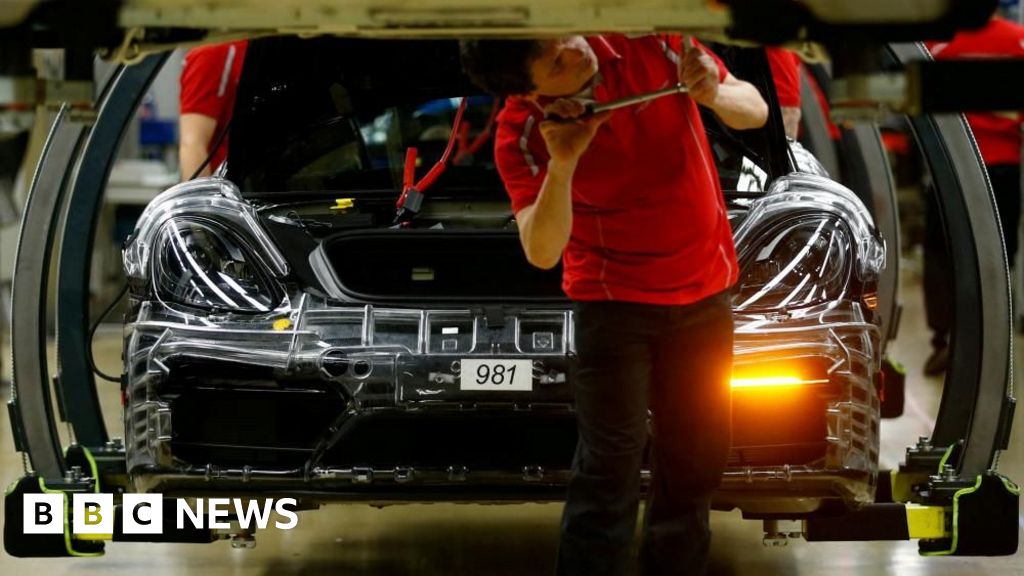
Musk’s Starship rocket makes breakthrough ocean landing
- Science
- June 6, 2024
- No Comment
- 134
Jonathan Amos,Science correspondent, @BBCAmos
Elon Musk’s mammoth new rocket system has returned to Earth in a groundbreaking fourth test flight that culminated in a first-ever soft ocean landing for the Starship craft.
The aim was to get the rocket’s upper section – the Ship – to make a controlled return into the atmosphere and then to ditch in the Indian Ocean.
But the 121m-tall Starship went much further, descending broadly intact all the way to the sea surface. Video from the vehicle indicated it was falling apart at the end, but still operating.
“Splashdown confirmed! Congratulations to the entire SpaceX team on an exciting fourth flight test of Starship!” the company said on X.
Earlier in the flight, the booster part of the rocket was brought back down to the Gulf of Mexico, to hover just above the water.
That’s also a big step forward from previous test flights when the booster was destroyed in flight.
This was the fourth test flight in SpaceX’s Starship development programme, and by far the most consequential.
It sets the company up to make further, rapid progress.
“Despite loss of many tiles and a damaged flap, Starship made it all the way to a soft landing in the ocean! Congratulations @SpaceX team on an epic achievement!!” Mr Musk wrote on X.
 SPACEX
SPACEXStarship dwarfs all previous rocket systems.
The 33 engines at its base produce 74 meganewtons of thrust. To put that in context, the US space agency’s (Nasa) biggest rocket – the Space Launch System, or SLS – produces 39 meganewtons off the pad, and that’s over 20% more than the old space shuttle system could generate.
If SpaceX engineers can perfect Starship, it will be revolutionary.
It’s intended to be fully and rapidly reusable, to operate much like an aeroplane that can be refuelled and put back in the air in quick order.
This capability, along with the heft to carry more than a hundred tonnes to orbit in one go, would radically lower the cost of space activity.
 SPACEX
SPACEXFor Elon Musk, Starship is key to realising his long-held ambition of taking people and supplies to Mars to build a human settlement. It will also assist his Starlink project which is establishing a global network of broadband internet satellites.
There are thousands of Starlink spacecraft in orbit already, but later models will be larger and heavier and Starship will be needed to get them to space.
Among the keenest observers of the test flights in Texas is Nasa.
Starship is critical to the agency’s Artemis programme to put astronauts back on the Moon this decade. A version of Starship would act as the landing craft, taking the crew from lunar orbit down to the surface – and then lifting them back off again. SpaceX, however, will first have to show it can produce a safe and reliable vehicle before astronauts are permitted to climb aboard.
Nasa has scheduled late 2026 for when it would like to see boots back on the lunar surface.

#Musks #Starship #rocket #breakthrough #ocean #landing









